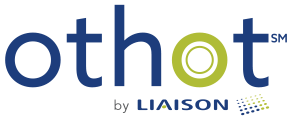Delayed Results: The June 1 Enrollment Outlook

Othot Partner Success Team
Another month has passed since we shared a post about May 1 enrollment trends among our higher ed partner institutions. Because of COVID-19, some schools officially shifted their admissions “Decision Day” to June 1 and others unofficially continued to accept deposits after May 1. While some institutions had positive deposit results in May, the majority were behind their projected, year-to-date targets. May deposits varied based on institution type, size, and geographic location, and overall there was ground to make up.
June 1 trends among our partner institutions are showing signs of optimism, much like those discussed in the
The Chronicle article, A Fall Enrollment Disaster? Early Signs Say, Not Everywhere. As we all know, this follows months of speculation (and lots of surveys asking questions about students’ plans) of what enrollment would look like for the Fall given the COVID-19 pandemic. Our data agrees with the Chronicle’s article’s premise: the sky isn’t falling as badly as was speculated.
The following is an update to the May 1 post, and as a reminder, all findings are aggregated and anonymized.
How are Overall Higher Ed Enrollment Rates Trending?
When comparing May 1, 2020 deposits to May 1, 2019 deposits, the average rate across all of our partners appeared bleak. The data showed -13.0%. Deposits have significantly improved over the last month. When comparing June 1, 2020 deposits to June 1, 2019 deposits, the average rate across all our partners is -4.46%.
We have also seen an improvement in the sum of all deposits from all institutions. The trend is showing for June 1, 2020, -1.26% behind June 1, 2019, compared to May 1, 2020, -3.8% behind May 1, 2019. Again, this is driven by larger institutions still performing better.
| May 1, 2020 vs. May 1, 2019 | June 1, 2020 vs. June 1, 2019 | |
|---|---|---|
| Average Deposit Rate Across Othot’s Partners | -13.00% | -4.46% |
| Sum of all Deposits from Othot’s Partners | -3.80% | -1.26% |
Public vs. Private Higher Ed Institutions
When we looked at public institutions and private institutions, the May 1 deposit rates were fairly similar between the two types of institutions, and that’s persisted to June 1.
The average deposit rate for public institution partners on May 1 was -12.7% compared to -13.7% for private institution partners. But as of June 1, private institutions made up more ground than public institutions—they are now -4.20% behind last year, while publics are -4.58% behind last year.
| May 1, 2020 vs. May 1, 2019 | June 1, 2020 vs. June 1, 2019 | |
|---|---|---|
| Public Institutions | -12.70% | -4.58% |
| Private Institutions | -13.70% | -4.20% |
Large vs. Small Higher Ed Institutions
Next we looked at the size of institutions. We defined size using the following criteria:
- Institutions that enroll greater than 2,000 new first-time students
- Institutions that enroll less than 2,000 new first-time students.
On May 1, the institutions that have greater than 2,000 new first-time enrollment show slightly better results than last year at +0.4%. The institutions with less than 2,000 new first-time enrollment have a negative rate of -18.9%.
On June 1, institutions that enroll greater than 2,000 new first-time enrollment are still ahead at +1.03%, and institutions that enroll less than 2,000 are still behind at -7.02%.
| May 1, 2020 vs. May 1, 2019 | June 1, 2020 vs. June 1, 2019 | |
|---|---|---|
| Greater than 2,000 First Time Students | +0.40% | +1.03% |
| Less than 2,000 First Time Students | -18.90% | -7.02% |
Geographic Regions
Finally, we looked at performance trends by geographic areas. When comparing the average deposit rate from May 1, 2020 to May 1, 2019, partner institutions in the Northeast are seeing a rate of -21.4%. Compare that to the rest of the country at -10.9%.
As of June 1, the Northeast is still behind the rest of the country, but both are making progress to close the gap when compared to last year. The Northeast institutions are now at -8.64% and non-Northeast partners are at -.98%.
| May 1, 2020 vs. May 1, 2019 | June 1, 2020 vs. June 1, 2019 | |
|---|---|---|
| Northeast | -21.40% | -8.64% |
| All other U.S. regions | -10.90% | -0.98% |
What’s to Come for Higher Ed?
There is a lot to determine about how higher ed institutions will operate in the fall because of COVID-19. Some have decided to welcome students in person and others have said they will be virtual. Some are starting earlier, and others haven’t communicated official plans. With every change and communication, the predicted outlook for enrollment will change, but for now, it’s great to see the continued and increasing commitment by students to a higher education institution for the Fall term.

Othot Partner Success Team



